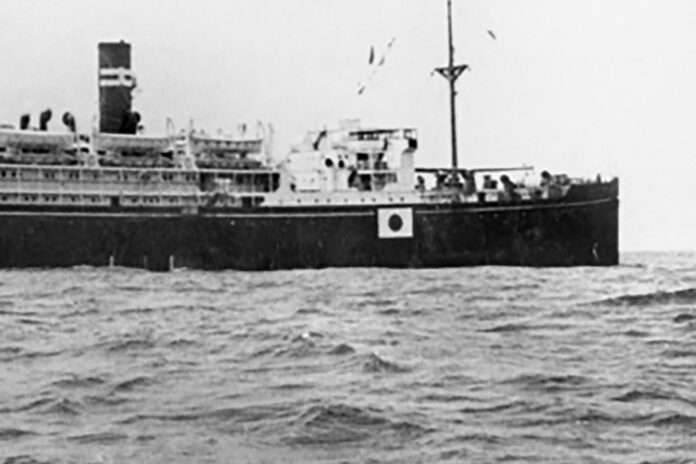(Sydney) After eight decades of mystery, the discovery: the wreckage of a Japanese ship torpedoed during World War II with more than 1,000 people on board, mostly Australian prisoners, has been found off the coast of the Philippines.
The Montevideo Maru was located on April 18 at a depth of more than 4,000 meters in the South China Sea, 110 km off the Philippine island of Luzon, the Silentworld Foundation, an underwater archeology society, announced on Saturday. . The discovery came after 12 days of research using, in particular, an underwater drone equipped with sonar.
This sinking remains one of the greatest maritime tragedies in Australian history.
The Montevideo Maru, a mixed freighter, had been sunk on July 1, 1942 by the American submarine USS Sturgeon, whose crew did not know that it was conveying prisoners to the Chinese island of Hainan, occupied by the Japanese army. allied warfare.
“We believe it was hit by two torpedoes. The first caused it to sink, the second blew up part of the accommodation,” Captain Roger Turner, technical director of the expedition, told AFP by telephone.
The ship split into two parts, with the bow and stern lying about 500 meters apart on the seabed, he said.
It took more than five years to plan the mission to find the ship, according to the Silentworld Foundation. The search began on April 6.
“The resting place of the lost souls of the Montevideo Maru has finally been found,” Australian Prime Minister Anthony Albanese said in a statement posted on social media.
“We hope today’s news brings some comfort to loved ones who have waited so long,” he added.
The Silentworld Foundation said the wreckage of the Montevideo Maru, which lies at a greater depth than that of the Titanic, would not be disturbed. No object or human remains will be removed, out of respect for the families of the victims.
“The discovery of the Montevideo Maru closes a terrible chapter in Australia’s military and maritime history,” said John Mullen, director of Silentworld, who conducted the research with Dutch firm Fugro, which specializes in deep-sea surveys. , and with the Australian Army.
“Families waited for years to hear from their missing loved ones before learning of the tragic outcome of the sinking,” he said. “Some never fully accepted that their loved ones were among the victims.”
Andrea Williams was part of the mission to find the wreckage. His grandfather and his great-uncle, both prisoners of war, were on the boat and had perished there.
It is an “extraordinarily important day” for Australians directly or indirectly affected by the disaster, she said.
“It was very moving, but it is also a great pride to have been able to find the wreckage”, she reacted to AFP, assuring that this news was “extremely comforting” for the relatives of the victims.
Finding the wreckage put an end to 81 years of uncertainty for the relatives of the victims, for his part hailed the head of the Australian army, General Simon Stuart.
“Such a loss spans decades and reminds us of the human cost of conflict,” he said.
Among the other dead aboard the Montevideo Maru were 33 sailors from the Norwegian freighter Herstein — also taken prisoner by the Japanese at Rabaul — and about 20 Japanese guards and crew, the Silentworld Foundation said.
Nationals of several other countries are among the victims of the sinking, according to the same source: United Kingdom, Denmark, Estonia, Finland, Ireland, Netherlands, New Zealand, Solomon Islands , Sweden and the United States.


















